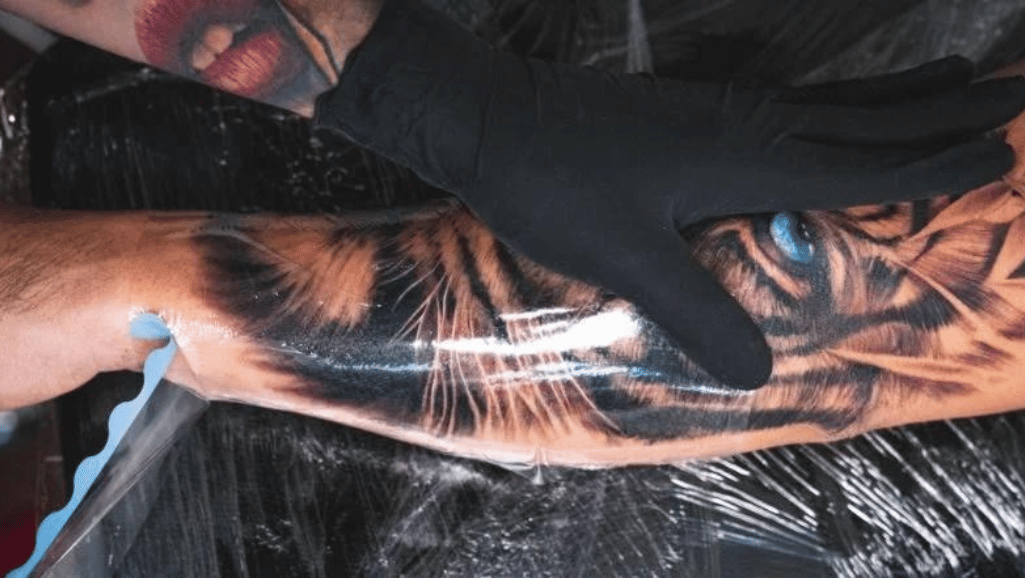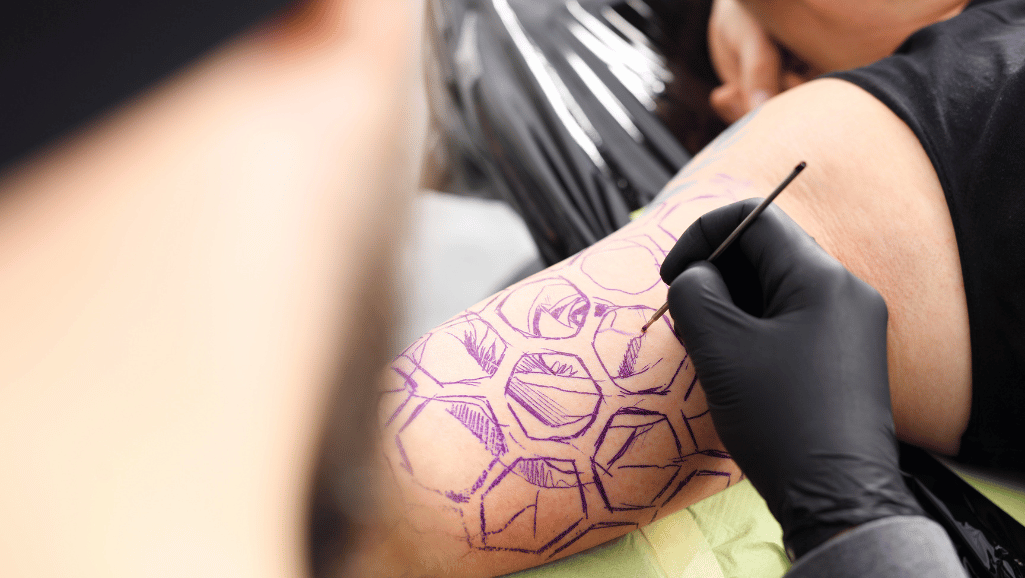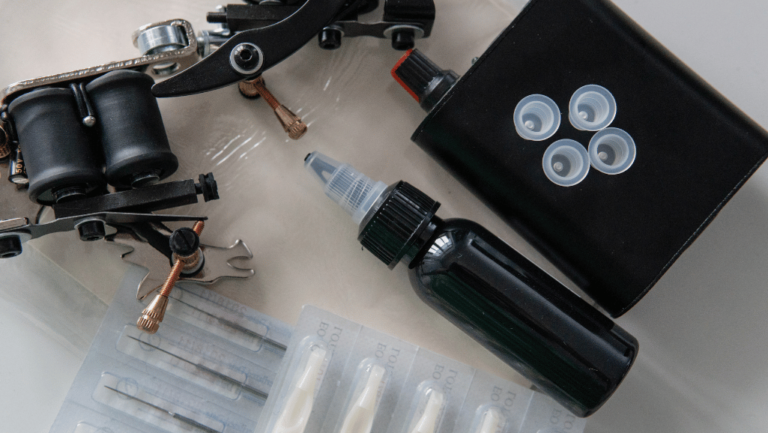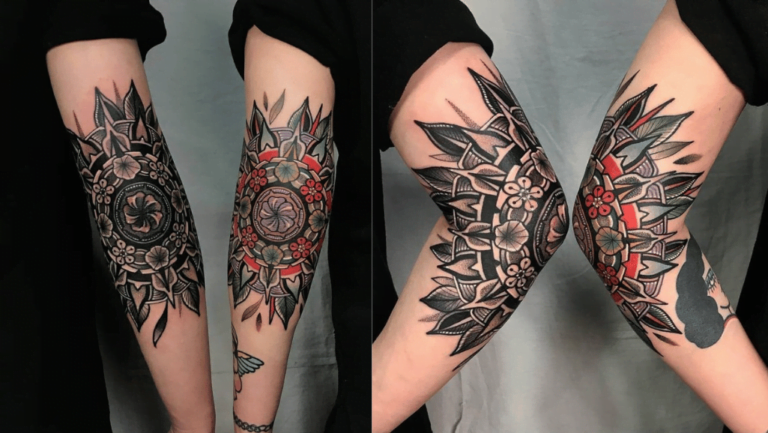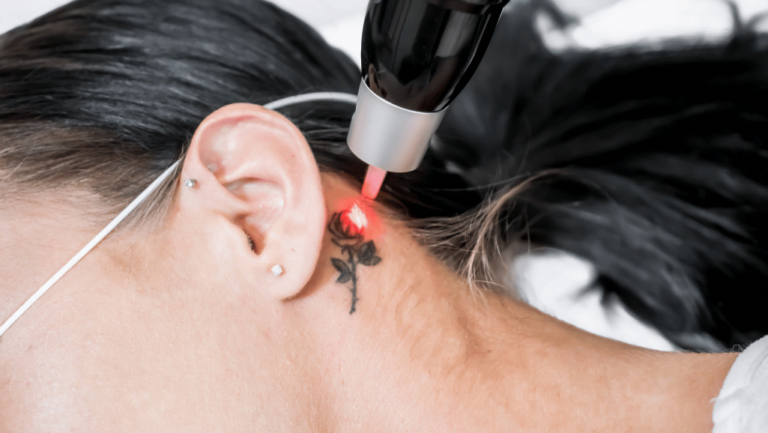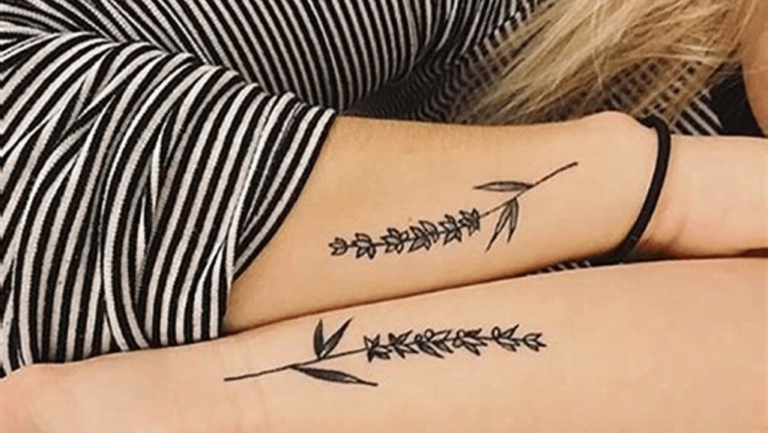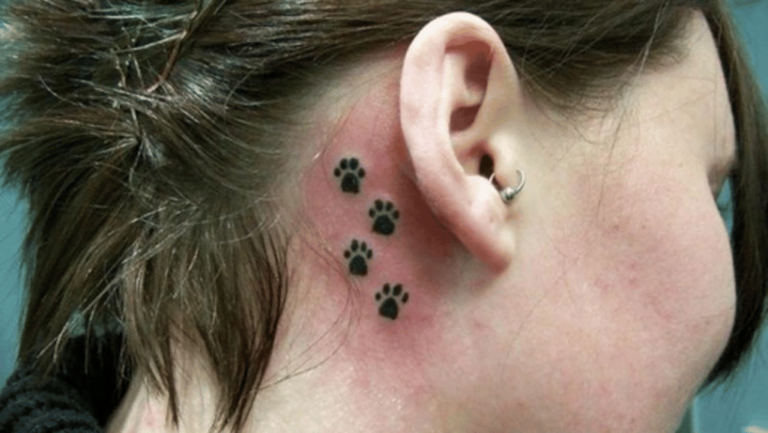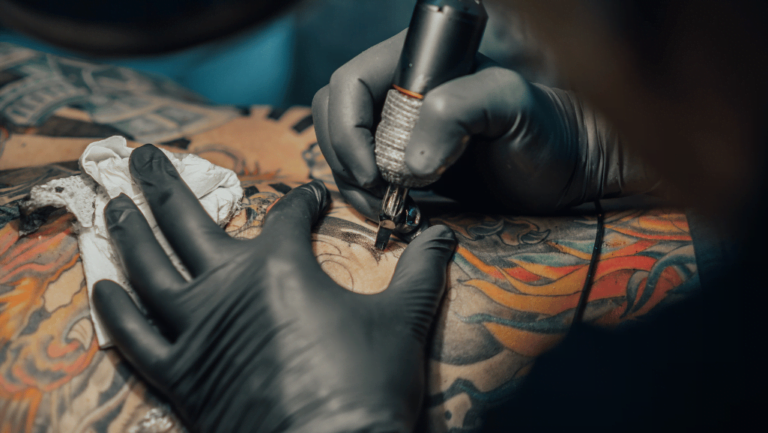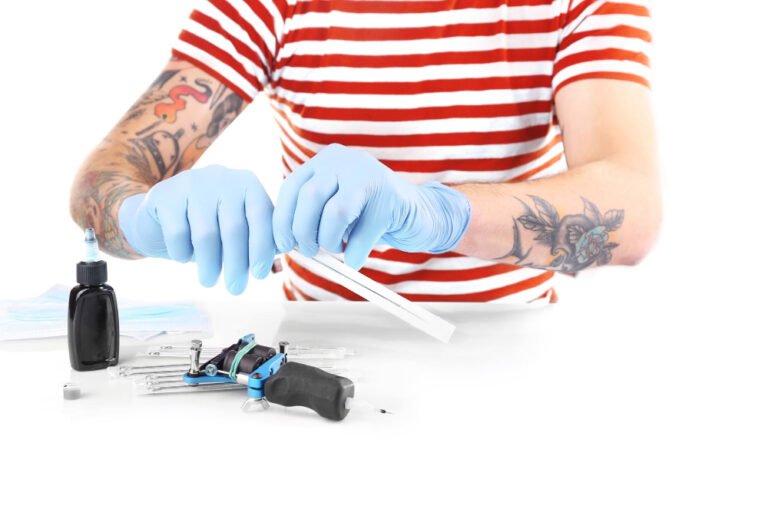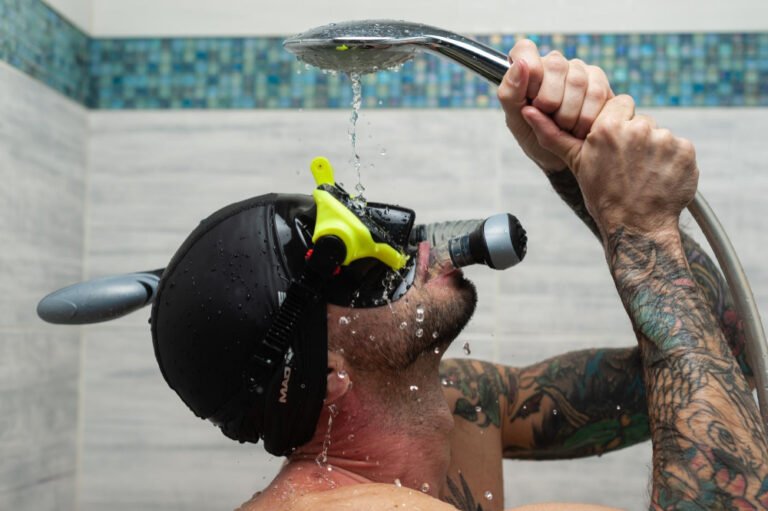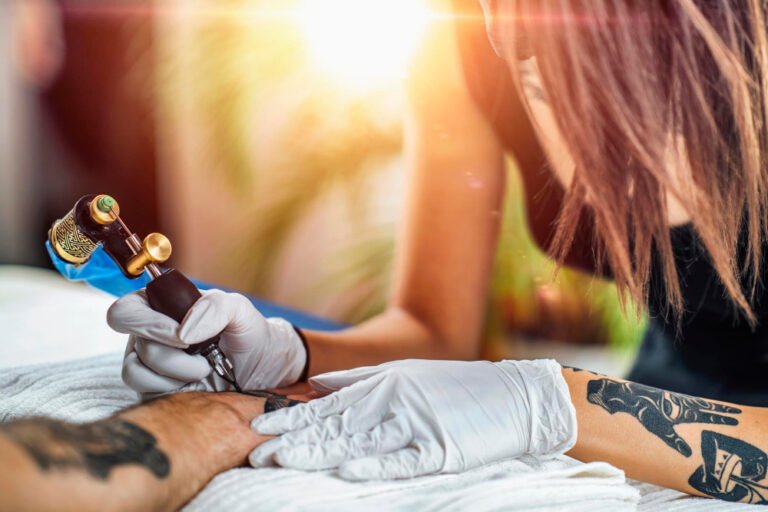When caring for a new tattoo, how long to keep a tattoo covered, it is important to keep it covered for the recommended amount of time to promote effective healing and vibrant results. The first 48 hours are crucial in the aftercare process, during which the tattoo should be kept clean, covered, and protected. It is recommended to follow the tattoo artist’s instructions and keep the tattoo bandage on for 3-4 hours before removing it. After the initial 48 hours, the tattoo can be left uncovered, but it is essential to moisturize it regularly and avoid exposure to moisture, sunlight, and harsh chemicals. The healing process for a tattoo can take up to 4-6 weeks, with different stages including scab formation and peeling. Proper aftercare practices, such as using tattoo-friendly moisturizers and avoiding picking at scabs, can help ensure optimal healing.
Key Takeaways:
- Keep a new tattoo covered for the first 48 hours for effective healing.
- Follow the tattoo artist’s instructions regarding bandage removal.
- Moisturize the tattoo regularly and protect it from moisture, sunlight, and harsh chemicals.
- The tattoo healing process can take 4-6 weeks, with stages like scab formation and peeling.
- Proper aftercare practices, such as using tattoo-friendly moisturizers and avoiding picking at scabs, can promote optimal healing.
Tattoo Bandage and Wrap Duration
When it comes to the duration for which a tattoo should be kept covered with a bandage or wrap, several factors come into play. These factors include the type of bandage used and the size of the tattoo. To ensure optimal healing and protection of your new tattoo, it’s important to follow the recommended guidelines.
After getting a fresh tattoo, it is common practice to keep the bandage on for approximately 3-4 hours before removing it. This helps to provide a protective barrier and prevent any potential contaminants from entering the tattooed area. Some tattoo artists may suggest leaving the bandage on overnight, particularly if they have applied a medical-grade protective film. However, it is crucial to monitor the tattoo for any signs of fluid buildup or irritation. If these issues arise, it may be necessary to change the bandage sooner.
During the early stages of aftercare, it is advisable to change the tattoo wrap at least once every 24 hours. This ensures that the tattoo remains clean and protected from external elements. However, it is important to note that specific artists may have different recommendations regarding rewrapping the tattoo. It is essential to follow their advice to ensure the best care for your tattoo.
To summarize, the duration for keeping a tattoo covered will vary depending on the type of bandage used and the size of the tattoo. It is generally recommended to keep the bandage on for 3-4 hours, but individual circumstances may require variations. Following the artist’s instructions and monitoring your tattoo’s condition will help promote effective healing and a successful outcome.
| Factors | Recommendation |
|---|---|
| Type of bandage | Follow artist’s instructions |
| Tattoo size | 3-4 hours or as advised |
| Signs of fluid buildup | Change bandage if necessary |
| Early stages of aftercare | Change wrap every 24 hours |
Tattoo Aftercare Guidelines for the First 48 Hours
During the first 48 hours after getting a tattoo, proper care and hygiene are essential to prevent infections and promote optimal healing. Follow these tattoo care instructions to ensure the best possible outcome for your new ink:
Clean the Tattoo
Begin by gently cleaning the tattoo using a professional tattoo cleanser or mild antibacterial soap. Use lukewarm water to prevent irritation or damage to the fresh ink. It is important to wash your hands thoroughly before touching the tattoo to avoid introducing any bacteria to the area.
Allow the Tattoo to Breathe
After cleaning the tattoo, it is crucial to allow it to breathe. Avoid covering the tattoo with tight clothing or bandages during this period. Loose and breathable clothing made of natural fabrics, such as cotton, is recommended to prevent sweat and moisture buildup.
Avoid Showering Immediately
Showering should be avoided for at least 3-4 hours after getting the tattoo to allow the initial healing process to begin undisturbed. When you do shower, avoid direct water pressure on the tattooed area and use lukewarm water. Pat the tattoo dry gently with a clean towel afterward.
Maintain Proper Hygiene
Proper hygiene is crucial in preventing tattoo infections. Use clean towels and sheets and avoid sharing them with others during the healing process. Avoid touching the tattoo with dirty or unwashed hands and be mindful of foreign objects that could come into contact with the tattoo.
Monitor for Infection Signs
Keep a close eye on the tattoo for any signs of infection, including excessive redness, swelling, pain, or pus-like discharge. If you notice any unusual symptoms, consult with your tattoo artist or a healthcare professional immediately.
Proper aftercare during the first 48 hours is crucial for preventing tattoo infections and ensuring a healthy healing process. By following these instructions, you can reduce the risk of complications and promote the longevity and vibrancy of your new tattoo.
Tattoo Healing Stages and Long-Term Aftercare
The process of tattoo healing involves several stages that are crucial for achieving optimal results and maintaining the integrity of the tattoo. Understanding these stages and following proper aftercare practices can help prevent complications such as infections and scarring, ensuring the long-term beauty and vibrancy of your tattoo.
Tattoo Scabbing Stages
Within the first 48 hours of getting a tattoo, scabs will begin to form as part of the natural healing process. It’s important to resist the urge to pick at these scabs, as doing so can lead to patchy areas and potential infections. Instead, focus on keeping the tattoo clean and moisturized to promote healthy healing.
Preventing Tattoo Infections
One of the primary concerns during the tattoo healing process is preventing infections. To minimize the risk of infection, follow these steps:
- Wash your hands thoroughly before touching the tattoo.
- Use a mild antibacterial soap or a professional tattoo cleanser to clean the tattoo gently.
- Avoid exposing the tattoo to moisture, such as swimming or soaking in a bath.
- Avoid touching the tattoo with unclean hands or objects.
- Keep the tattoo dry and avoid excessive sweating.
By following these precautions, you can significantly reduce the chances of infections and promote a smooth healing process.
Proper Tattoo Maintenance
Long-term aftercare is essential for preserving the quality and vibrancy of your tattoo. Here are some key practices for maintaining your tattoo:
- Keep the tattoo clean by gently washing it with a mild soap and lukewarm water.
- Pat dry the tattoo with a clean towel or allow it to air dry.
- Apply a tattoo-friendly moisturizer to keep the skin hydrated and prevent excessive dryness.
- Avoid exposing the tattoo to direct sunlight without protection. Apply sunscreen with at least SPF 30 or wear clothing that covers the tattoo.
- Stay hydrated by drinking plenty of water to promote overall skin health.
By following these long-term aftercare practices, you can ensure the longevity and vibrancy of your tattoo, allowing you to enjoy its beauty for years to come.
Conclusion
Proper aftercare is crucial for the healing and maintenance of a new tattoo. By following the tattoo aftercare tips provided by your tattoo artist, you can ensure the longevity and vibrancy of your ink while minimizing the risk of complications.
One of the key aspects of tattoo aftercare is keeping the tattoo covered for the recommended amount of time. This allows the tattoo to heal properly and protects it from external elements that could hinder the healing process. Additionally, using the best ointment for a new tattoo and following tattoo care instructions is essential. Tattoo-friendly products for cleaning and moisturizing help keep the tattoo clean and hydrated without causing any adverse reactions.
Throughout the healing process, it is important to be patient and avoid exposing your tattoo to moisture, sunlight, and harsh chemicals. These can all have a negative impact on the healing and long-term appearance of your tattoo. Following long-term aftercare practices, such as using sunscreen to protect your tattoo from the sun’s harmful rays and keeping it moisturized as needed, will help maintain the vibrancy and clarity of your tattoo over time.
Remember, taking proper care of your tattoo is an ongoing responsibility. By following these tattoo aftercare tips and giving your ink the attention it deserves, you can enjoy a beautiful and well-maintained tattoo for years to come.
FAQ
How long to keep a tattoo covered?
When should I remove the tattoo bandage?
How often should I change the tattoo wrap?
How should I care for my tattoo in the first 48 hours?
What are the stages of tattoo healing and long-term aftercare?
Forhad
Forhad's writing is not just about the artistry of tattoos or the latest trends in the industry; it's an exploration of the deep-rooted connections people have with their tattoos, reflecting personal narratives, cultural histories, and moments of transformation. Through a mix of in-depth features, personal narratives, and insightful analyses, he sheds light on the multifaceted nature of tattooing, revealing the emotional and cultural layers that lie beneath the surface.


